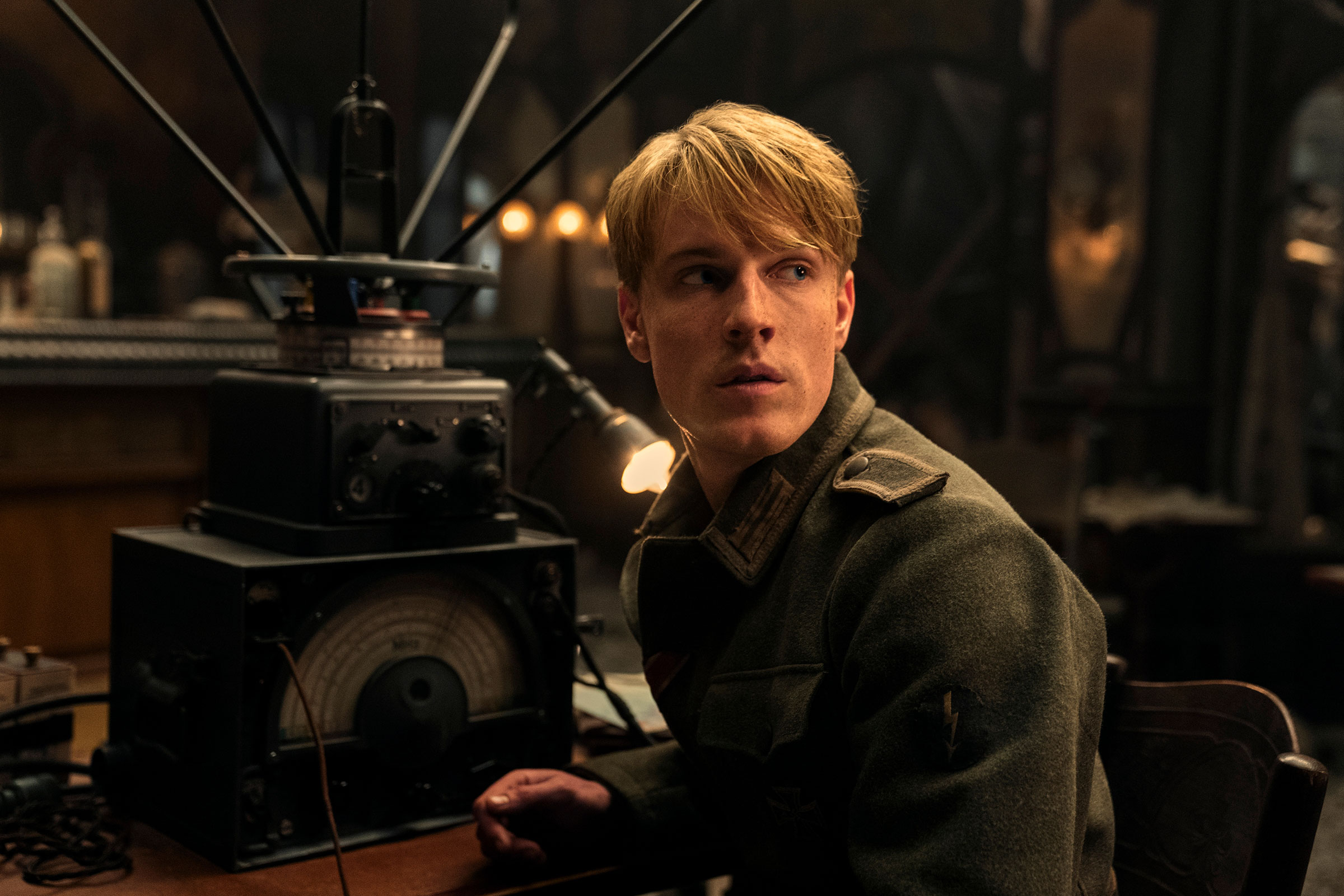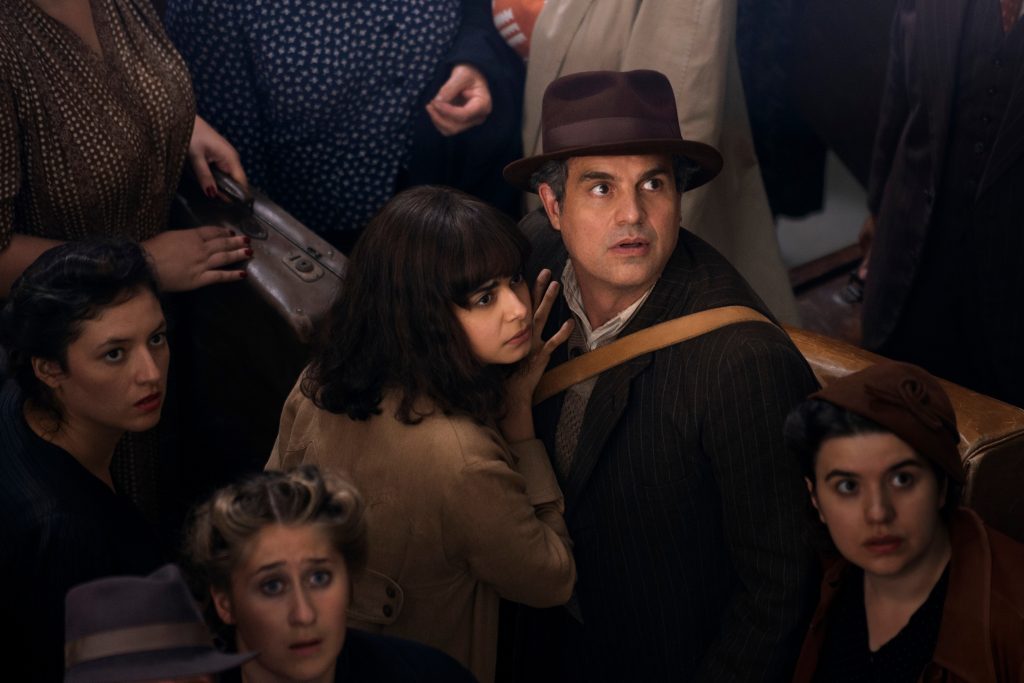Warning: This post contains spoilers for Netflix’s All the Light We Cannot See.
When it was published in 2014, Anthony Doerr’s All the Light We Cannot See emerged as an unexpected breakout book of the year, winning the Pulitzer Prize for fiction, spending more than 200 weeks on the New York Times best-seller list, and selling more than 15 million copies worldwide. Nearly a decade later, a four-part limited series adaptation of the acclaimed historical epic has arrived on Netflix.
Doerr’s All the Light We Cannot See weaves together the stories of a blind French girl named Marie-Laure LeBlanc (played in the show by Aria Mia Loberti, herself sightless) and German orphan Werner Pfennig (Louis Hofmann) as they navigate the horrors and devastation of World War II, unknowingly connected by a children’s science radio program created by Marie-Laure’s great-uncle Etienne (Hugh Laurie) and late grandfather Henri. The story zigzags through time, opening on the cusp of the Allied liberation of France in 1944 and jumping back to scenes from Marie-Laure and Werner’s respective childhoods.
Filmmaker Shawn Levy (Free Guy, Night at the Museum), who produced and directed the show from a script by Steven Knight (Peaky Blinders, See), told IndieWire that a limited series format felt like the only way to capture Doerr’s story on screen.
“My whole pitch [to Doerr] was, ‘Don’t try and cram your sprawling, epic novel into two hours,'” he said. “‘Let’s do it in this form that allows for longer narrative and storytelling. Let’s do it at Netflix where there will not be a mandate on runtime. There will not be a mandate on episode count. We’ll do this story right. We’ll do the adaptation right.'”
What happens in the All the Light We Cannot See book
In 1940, 12-year-old Marie-Laure and her father Daniel (played in the show by Mark Ruffalo) flee soon-to-be-Nazi-occupied Paris to take refuge in the French port city of Saint-Malo with Daniel’s uncle Etienne, a reclusive World War I veteran suffering from PTSD, and his housekeeper, Madame Manec (Marion Bailey). Unbeknownst to his daughter, Daniel has carried with him a legendary diamond called the Sea of Flames, a precious and supposedly cursed jewel from the Paris museum of natural history where he works, to prevent it from falling into Nazi hands.

At the same time, 14-year-old Werner, who grew up listening to Etienne’s radio program, is separated from his younger sister Jutta (Luna Wedler) and placed at an exclusive and brutal Nazi military school, the National Institute, after demonstrating an aptitude for engineering by repairing the radio of a Nazi official. At 16, Werner is drafted into the German army and assigned to a task force charged with locating and destroying anti-German radio broadcasts—a job he excels at, even if he does so reluctantly.
Two years later, Marie-Laure and Werner’s paths converge in Saint-Malo as the Allied Forces shell the city to rid it of its German presence in the months after D-Day. Alone and trapped in the attic of her great-uncle Etienne’s house as the bombs fall, Marie-Laure begins broadcasting from Etienne’s radio. Werner, who has been ordered to track down the broadcast signal, hears Marie-Laure and must make a fateful choice.
Meanwhile, Sergeant Major Reinhold von Rumpel (Lars Eidinger), a Nazi official and gemologist obsessed with the Sea of Flames, has tracked the stone all the way to Saint-Malo—and is willing to go to any length to obtain it.
How the Netflix series changes the book
Netflix’s All the Light We Cannot See changes the fates of a number of main characters, including Daniel, Etienne, and Werner.
In the novel, which took Doerr 10 years to write, Daniel is arrested on suspicion of treason while attempting to return to Paris in late 1940. He is sent to a German prison camp and eventually dies there sometime after 1943. In the show, von Rumpel personally tortures and kills Daniel in an attempt to find out where he hid the Sea of Flames. In both the book and show, Daniel leaves the stone—which is said to grant immortality to its owner at the cost of immense suffering to all their loved ones—inside the scale model of Saint-Malo he built so that Marie-Laure could learn her way around the city.
While both book Etienne and show Etienne eventually overcome their fear of going outside in order to help Marie-Laure carry out acts of resistance against Saint-Malo’s German occupiers, the show kills off Etienne rather than having him end up in prison and ultimately reunite with Marie-Laure like in the book.

The series most drastically alters Werner’s storyline, which ends in the show soon after he rescues Marie-Laure from being killed by von Rumpel, rather than extending into the aftermath of the Battle of Saint-Malo. Similar to what happens in the show, the book sees Werner arrive in France with orders to track down the source of a French resistance transmission, only to realize the signal is being broadcast by the same man who voiced his beloved childhood radio program. Werner feigns an inability to hear the signal and, after hearing Marie-Laure’s pleas for help, saves her from death at von Rumpel’s hands.
That’s where things begin to significantly diverge. In the book, Marie-Laure leads Werner to a gated grotto in the city where she surrenders the Sea of Flames back to the ocean—the only way to break its supposed curse—and gives the key to the grotto gate to Werner inside the miniature of Etienne’s house from Daniel’s Saint-Malo model. Werner ensures Marie makes it to safety before he is captured and sent to an American prisoner-of-war camp. There, he falls gravely ill and wanders out of a hospital tent one night only to step on a German landmine and be killed instantly—a moment that hammers home the novel’s overarching message about the futility of war.
The book ends decades later with Marie-Laure, now an old woman once again living in Paris, coming back into possession of the miniature house and key. The show, on the other hand, leaves off everything after Werner is taken into U.S. custody and Marie-Laure throws the diamond into the ocean.
The show also skips over some of the novel’s more resonant plot lines throughout the story, including Werner’s friendship with Frederick, a fellow National Institute student who is left with severe brain damage after being brutally beaten for refusing to participate in the torture and humiliation of an enemy prisoner while attending the school.
Many of these narrative changes were made, according to Levy, in order to make the show “make sense on screen, on Netflix, for a global, mainstream audience in 2023.”
“Though it is far from a happy ending, I wanted to end with a promise of hope,” he told Entertainment Weekly. “There were some bleak, deeply upsetting scenes late in the book that we didn’t include in the show.”
